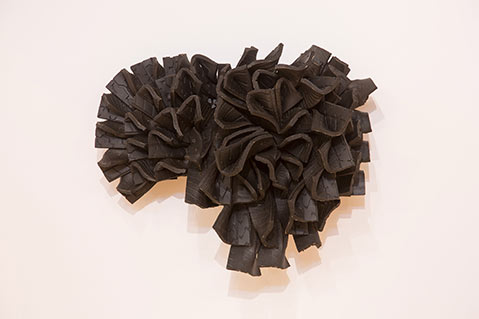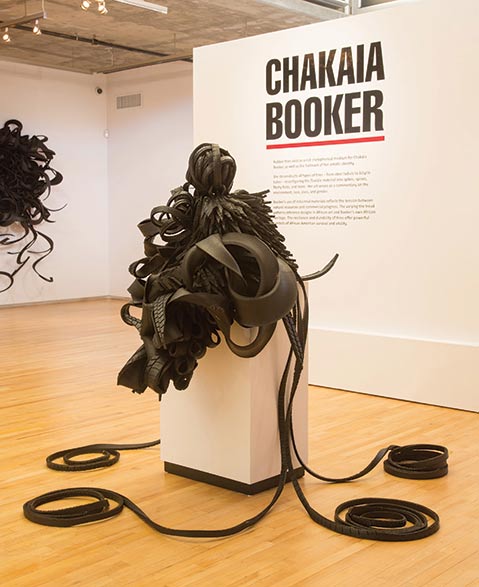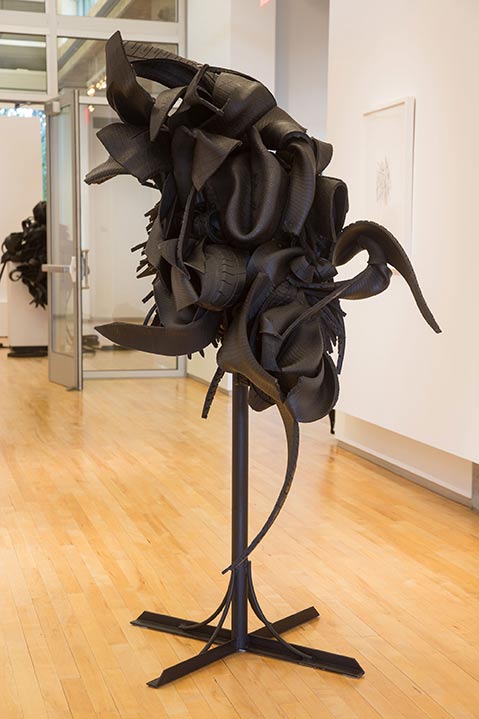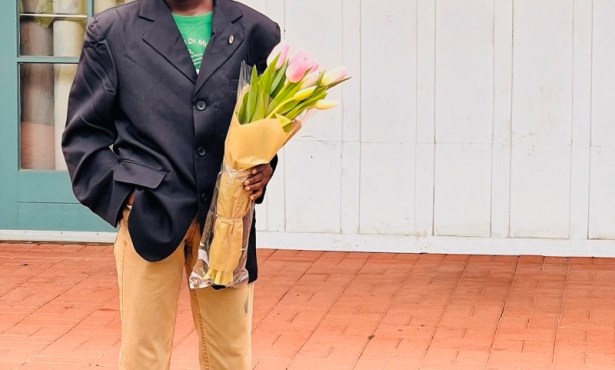Review: Chakaia Booker at the Westmont Ridley-Tree Museum
New Jersey Artist Transforms Tires into Sculpture

Like fingerprints and footprints, tire tracks are what forensics refers to as “impression evidence.” The FBI keeps an extensive file of tread designs, and police investigators are trained not only to identify the vehicles that suspects drive but also to uncover a whole range of other facts about the scene just from looking at the patterns rubber leaves on asphalt. In Chakaia Booker’s beautiful, moving new exhibition at the Westmont Ridley-Tree Museum, not just the treads but whole tires are reclaimed from this kind of scientific objectification and elevated — through a highly expressive, gestural process — to the level of fine art.

It’s fun to imagine the kind of mental overload these works might cause for a crime-scene analyst. Just what happened here? This is impression evidence that tells a much bigger story than what type of car hit the brakes at what speed and for how long. In works like “Color of Hope” (2010), a horizontally organized weave of spiraling black rubber that stretches 14 feet long and more than eight feet high, Booker achieves a nuanced boldness that revives and challenges the modern sculpture traditions of industrial fetishists like Richard Serra and transformational shamans like Joseph Beuys.
Working with materials that are close to hand in northern New Jersey and in Pennsylvania (where Booker lives and has her studio, respectively), the artist cuts, ties, crimps, tangles, staples, and connects tires from cars and bicycles until she has conjured a new object with a powerful aesthetic presence. And what she comes up with varies widely, from anthropomorphic figures like “Holla” (2008) to Rodin-esque monumental gates such as the one-ton “Added Substance” (2008).

In a gallery talk at the exhibition opening on December 11, Booker expressed equal parts humility and confidence by acknowledging that she is not the first or the only artist to make sculptures from tires. “Rauschenberg had his thing, but I’m not Rauschenberg,” she told the group and went on to explain that when she goes to work there are “no rules” and that she tries to do something different every time. Booker described her titles as “deliberately open ended” and declined to interpret any individual piece so as not to interfere with the viewer’s own imagination.
The show looks great in the space, and the prints, most of which are untitled, open up the sculptures by returning to the patterns that attracted Booker to tires in the first place. These fine prints are collaborations with master printmaker Phil Sanders that employ woodcut, chine-collé, embossing, and hand painting to achieve a classic yet soulful austerity. Moving back and forth between the prints and the sheer physicality of the big, black rubber sculptures, one gets a glimpse of the creative mind behind them both, and it is one that combines a strong sense of place and of history with extraordinary resilience and an ability to start every day by looking at the world anew.



